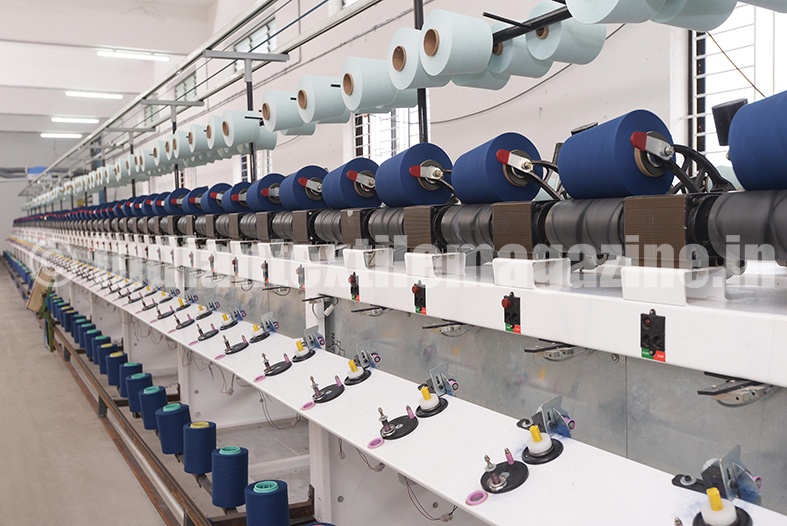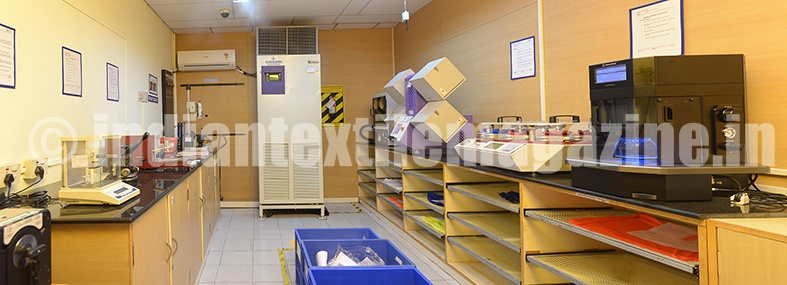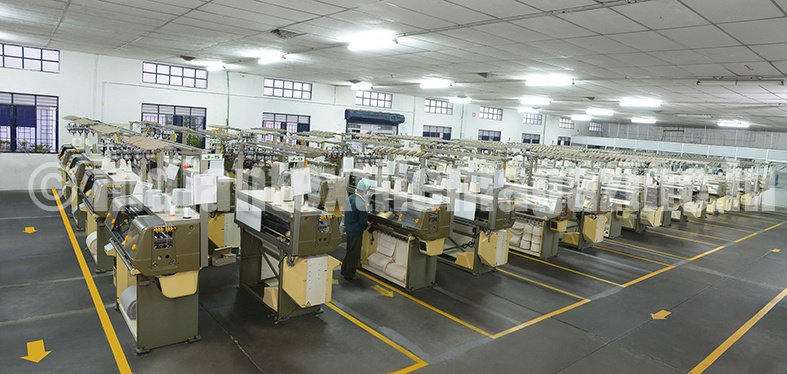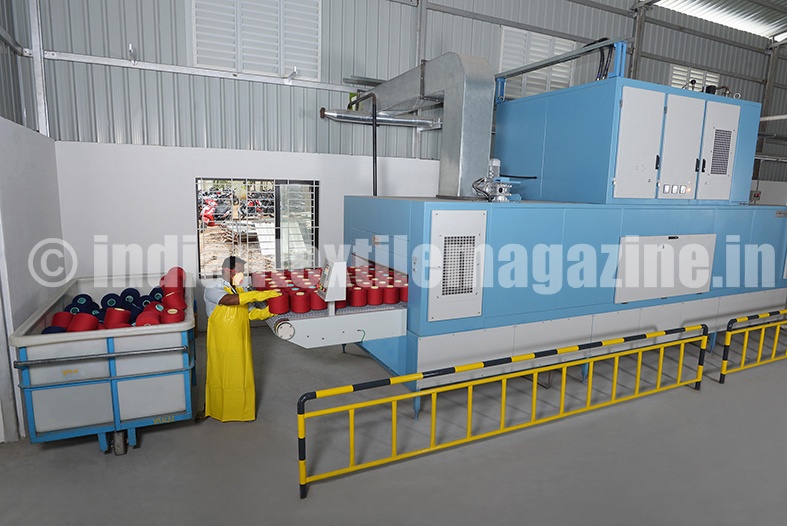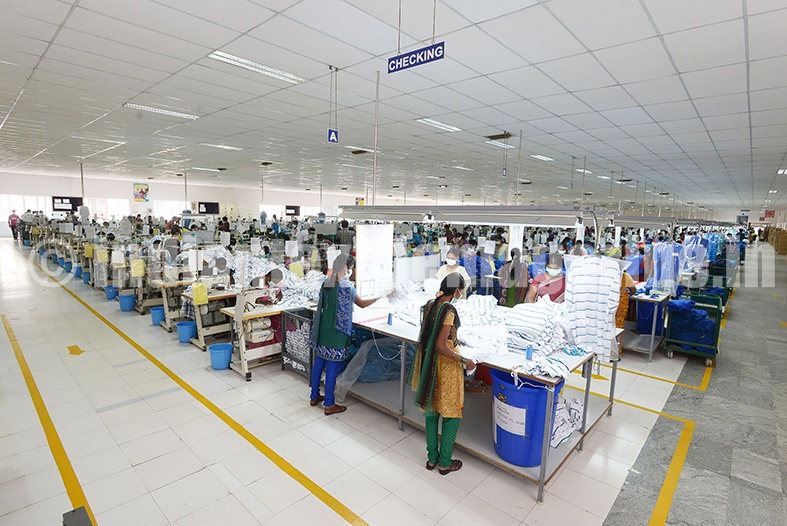A lot has already been said and written on Tiruppur’s legendary entrepreneurial spirit. Stories abound about the remarkable paths of entrepreneurs making it big in the apparel exports industry. One such remarkable growth story has been that of Eastman Exports. The group has carved a niche, all its own, as a leading manufacturer and exporter of quality garments, knitted fabric, clothing and custom-T shirts.
From its modest beginning, Eastman Exports has today become a name that is one of the most instantly recognized globally from amongst the Indian textile fraternity, which is no mean feat.
In an exclusive interview, Mr. N. Chandran, Chairman & Managing Director, and Mr. Cibi Karthic, Director of the company, shared insights on the company’s eventful journey, its product line, USPs, future growth plans and its views on the various challenges faced by the knitwear industry.
Excerpts:
Recollecting how it all began, Mr. Chandran, a first generation entrepreneur hailing from an agrarian family and the guiding force behind Eastman Exports’ remarkable growth story, said: “I entered the industry in 1975 after completing my graduation. I started off with a small lab in my home. Through trial and error I tried out a few processes. It was then in 1976 that I started a dye house. Tiruppur those days was a big producer of white products and for exports they needed good dye houses. However, a vast majority of dye houses those days were following rather crude methods, basically doing things manually without machines. I sensed an opportunity in setting up a modern mechanized dye house. My brothers who were also in the textile industry joined me later. Initially we were using machines designed here in Tiruppur. Gradually we went in for machines manufactured in Mumbai. After making some money we went for imported machines. Initially the group was into the dyeing business under the name ‘India Dyeing’. Then Eastman Processes, Colorcraft, India Processing Chennai, etc., followed. Pretty soon the group gained fame as the best dyeing house for exports.
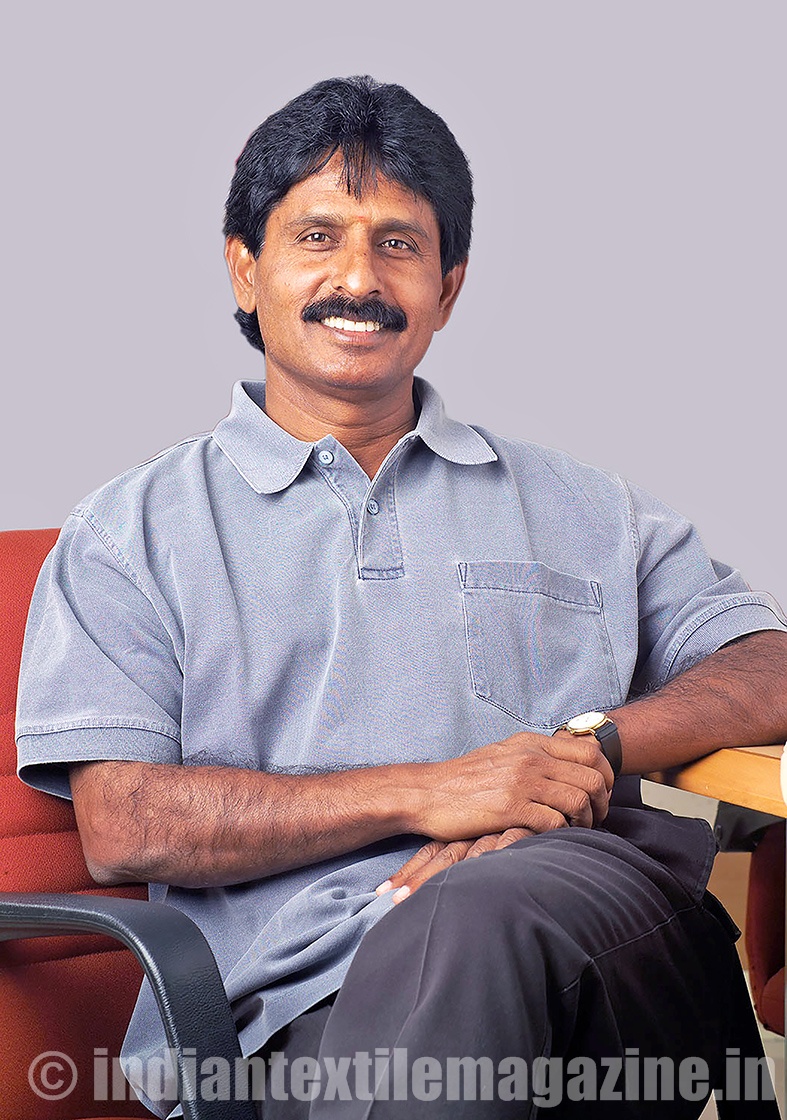
The group then ventured into export business in 1983. Elaborating further, Mr. Chandran said: “We started off with exports in 1983. In 1984 there was a big strike in Tiruppur. However, we were still making some shipments. Things got back on track by 1986. By then we were focused on building Eastman as a vertically integrated entity, bringing all processes, right from yarn to readymade garments manufacturing. Today we don’t import any fabric. It is only in the case of certain special fabrics that we source from outside. Otherwise we have our own modern units for every process, right from spinning, knitting, dyeing, embroidery, to packaging”.
While the company’s spinning unit (50,000 spindles) is located in Dindugal, Tamil Nadu, its dyehouse with a capacity of 70 tons of fabric per day is located in Erode, and its knit facility in Tirupur and Perundurai. Eastman has the capacity to ship 10-12 million pieces per month, a factor that has seen it become one of the largest apparel exporters to emerge out of India.
The capability to design its own garments was highlighted as a key area of strength for Eastman by Mr. Chandran, who is himself an ace designer. Adding further on the subject, he said: “I personally visit high street fashion destinations, study the latest fashion as well as technology trends and try and incorporate them in Eastman. It has always been our endeavour to add value, a factor that has stood us in good stead all these years and made us a preferred choice of globally reputed clients.”
Eastman caters to global brands such as Tommy Hilfiger, Caribbean Joe, Diesel, Timberland, DKNY, Outrange, Quik Silver, etc. Some of the leading global retailers that it caters to include names such as Decathlon, C&A, Nike, Mark & Spencer, Calvin Klein, GAP, Metro Group, etc.
Strong R&D Focus
The ability to constantly monitor the market trends and innovate has been another area of strength for the group which has its strong R&D focus. It has a state-of-the-art design studio equipped with features such as ‘Virtual Fit Simulation’, which is 3 dimensional fit simulation software for virtual fitting and draping of garments created using CAD pattern. Similarly, the company has an in-house dedicated design team to do research on print graphics, embroidery and printing techniques. The company has been conferred certificates, including Oeko Tex, OE-100, GOTS, ISO, WRAP and SA 8000 for quality management, environmental management and social accountability management.
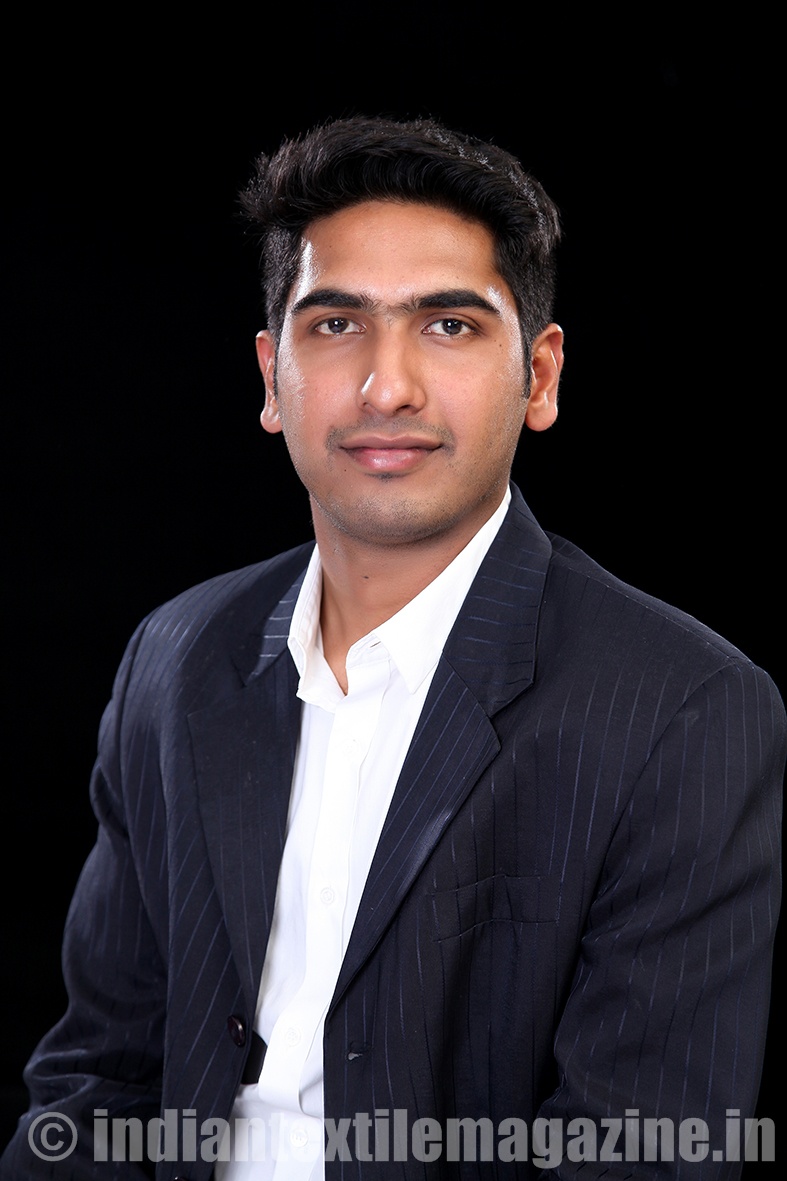
Speaking about the challenges faced by apparel exporters, Mr. Chandran explained: “It is a fact that we face stiff competition from countries such as Bangladesh and Cambodia. They have duty-free access to European markets. We can beat them only by offering value addition and flexibility. We have one of the best product development teams. Similarly, we have a state-of-the-art design studio, an R&D team which is always on the look-out for new finishes, etc., all key factors that have enabled us to be competitive despite tough international competition.”
Tackling pollution
Pollution caused by dyeing units has always been a contentious issue in Tiruppur. According to Mr. Chandran, Tiruppur has moved forward and has today become a role model for others by its implementation of ‘Zero Liquid Discharge’.
Throwing some more light on the issue, he said: “Tiruppur’s entrepreneurs are known for their never-say-die attitude. Pollution-related problems are a thing of the past. Now almost everyone is coming here to take a close look at the remarkable achievements of Tiruppur in the pollution control area. Recently a team from Bangladesh had come calling. Eastman is a zero discharge company. We use a combination of technologies such as biological, chemical, RO, etc., to achieve this. We also recycle and reuse some of the water and chemicals that we use. All this at a huge cost, sometimes to the tune of 20% of the total production cost. However, we cannot pass this onto the customers. So, all these are challenges. With increasing awareness about environmental issues, entrepreneurs here are trying to promote the fact that Tiruppur’s manufacturing process is ‘Green’, which is a key value addition these days and something that globally reputed buyers are very particular about”.
Mr. Chandran felt pained that certain sections had cast aspirations on Tiruppur without ascertaining the ground reality. “There was a lot of unnecessary bad press that Tiruppur had to cope with at that time. Certain sections had cast aspersions without ascertaining the progress being made at the ground level. My message to anyone who has doubts over Tiruppur’s capability to address this problem is to come and take a first-hand look and not pass judgment sitting elsewhere”, he added.
Mr. Chandran who is the also the Chairperson of the Tiruppur Stakeholders Forum had through its efforts tried to spread the message that Tiruppur is different and that its entrepreneurs are willing to walk the extra mile to address and end this issue.
Similarly, Mr. Chandran has absolute confidence in Tiruppur and its entrepreneurs to surmount challenges and keep moving forward. According to him the global recognition that Tiruppur has earned is because of hard work and enterprise of the industrialists here. “I don’t believe in opportunities coming and knocking at your door. Instead it is us who have gone and searched for opportunities. Nothing was handed over to us in a platter. Our success is hard earned. We are catering some of the top retail giants. In certain situations when they are facing the heat, it also passes onto us. During such times we have faced the challenges and come out winners. I am sure this will be the case in the future also”.
Giving his views on the issue of shortage of skilled labour, Mr. Chandran, whose group directly and indirectly provides employment to 12,000-15,000 persons felt that this issue is something that cannot be wished away overnight. According to him India should be happy that it has a large pool of young workforce and moreover the government is taking steps to enforce skill development programs for various industries.
Speaking about attracting talent to Tiruppur at the middle management level, Mr. Cibi Karthic said that it is important to provide an ideal work culture that encourages learning, generates a sense of belonging among employees and offers them a good package as part of the strategy to retain talent.
HUETRAP – a Gen Next Initiative
For Mr. Cibi Karthic who has completed his graduation in textile technology and subsequently pursued post graduation in management at Manchester, UK, integrating into the family business has not been a difficult task. Explaining the reason behind it, he said: “Though most of the key people here know me from a very young age, they are top professionals. So I have not faced many difficulties integrating into the business.”
Mr. Karthic has recently started an e-commerce brand, ‘HUETRAP’ clothing, which has been doing very well. Going into further details, he said: “Our primary target group are fashion conscious customers of the 18-30 age group. We have an excellent team and operate on a just-in-time model. As of now, we have a few thousand designs available on our website and other market places such as Flipkart, Snapdeal, Amazon and Myntra”.
According to him, short term to mid term, the company is only looking to cater to the domestic market, looking at other markets only in the long run. While in the short to medium term the focus was being an e-commerce platform, in the long run the company is always open to looking at sales through brick and mortar stores.
Spelling out the future plans, he said: “Yes, I am very passionate about the business. I am very excited about what’s in store for Eastman and HUETRAP. There is always scope for improvement. We are constantly looking at ways to evolve and improve our competencies”.
Buoyant about the future
Sharing similar views Mr. Chandran, on a parting note, mentioned that at Eastman there is always focus on investing in the latest machinery and constant upgradation at regular intervals.
Elaborating, he pointed out: “We invest hugely in plant and machinery. Similarly we also invest a lot in sustainable technologies, which helps in saving water, improving energy efficiency, etc. Similarly, as my son mentioned there is a lot we are doing to improve systems too using the latest generation software such as ERP. With India further consolidating its position as a key global textile hub, we are all excited and look forward to a period of rapid growth”.

